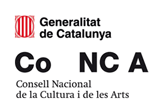Topics
Sound and Music Computing research approaches the whole sound and music communication chain from a multidisciplinary point of view. By combining scientific, technological and artistic methodologies it aims at understanding, modelling and generating sound and music through computational approaches. The central focus of the research field is sound and music. Sound is the resonance of objects and materials that we can listen to. Music is the intended organisation of sounds for particular uses in social and cultural contexts. The sound and music communication chain covers all aspects of the relationship between sonic energy and meaningful information, both from sound to sense (as in musical content extraction or perception), and from sense to sound (as in music composition or sound synthesis). This definition is generally considered to include all types of sounds and human communication processes except speech. Speech research has its own aims and methodologies and is outside the SMC field.
The other elements contained in the definition statement above can be briefly explained as follows:
The multidisciplinary point of view relates to the use of various research methodologies and disciplines from the natural and human sciences. SMC also includes various research goals and approaches that deal with cross-modality, such as the relationship between perception and action and the integration of different senses involved in human-machine interaction (hearing, vision, movement, haptics, etc.), both in individual and social contexts.
Scientific and technological methodologies refer to empirically-based and modelling-based approaches that draw upon advanced tools for measuring and processing information. Artistic methodologies refer to approaches that explore human experience and expression.
Understanding refers to our knowledge of the mechanisms that underlie how people deal with sound and music in terms of its content and experience.
Modelling refers to the representation of knowledge through algorithms and tools.The resulting models are used both in applications that aim at scientific understanding (e.g. simulation of perceptual processes) and also in applications that aim at practical understanding (e.g. in sound-aware objects, music information retrieval systems, music production companions).
Production refers to the creative use of algorithms and tools to develop new content in which sound and music are communicated, as in sound environments, interactive artistic works and sonic design.
Computational approaches refer to the core processing which allows the development of tools linking sonic energy with subjective experience. Computing is the shared practice that connects scientific understanding, the development of technological equipment and content-based creation.
(text from the SMC Roadmap, http://smcnetwork.org/roadmap/definition)






